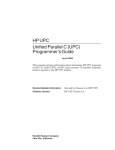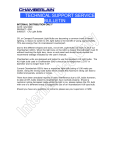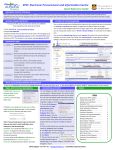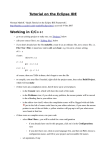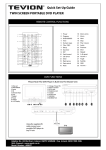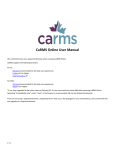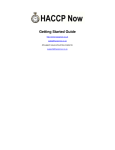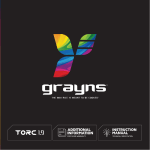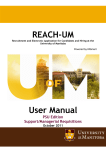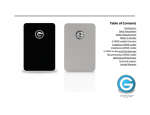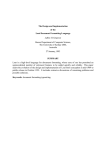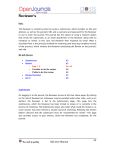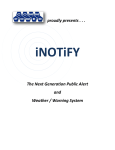Download TUGboat, Volume 21 (2000), No. 2 111 Turbulent transition G
Transcript
TUGboat, Volume 21 (2000), No. 2 Turbulent transition G. Grätzer Abstract It seems that more and more mathematical journals require submission in LATEX. This welcome trend is causing a lot of problems for journals and mathematicians alike. This article describes what is happening and how could we get out of this unpleasant transition period. 1 Introduction It was the promise of LATEX that the submission of mathematical papers to journals will be revolutionized: • You submit your mathematical article to a journal. • On acceptance, the editor changes the name of the document class you used to that of the document class of the journal. • Magically the article is transformed to conform to the format of the journal. • Nobody touches the article proper, so no errors are introduced; since the change is trivial, there is no cost. No need to mail and proofread galleys, no need for expensive print shops; everybody gains. There is no difficulty sending your articles to other mathematicians. Converting LATEX to PDF is easy, so publishing your article (or journal) on the Web is almost cost free. Talk to a publishing mathematician, and he will tell you many stories about the problems encountered submitting articles in LATEX. Talk to an editor of a mathematical journal and the editor will relate many stories, albeit from a different viewpoint. In this article, I will describe the way I see the situation and suggest remedies to ease this transition. I write about the turbulent transition of mathematical journals from typesetting in print shops to working with LATEX from the point of view of 1. a mathematician; I have written about 60 mathematical articles in LATEX and one long mathematical book of almost 700 pages; 2. an Editor-in-chief of an international mathematical journal; 3. an author of many books and articles on LATEX. 111 2 Anecdotal evidence 2.1 Submitting articles In recent months, I have submitted five mathematical articles to international mathematical journals. Let us look at my experience. 2.1.1 First article This article went to a journal published by the largest publisher of scientific journals in northern Europe. After some searching, I found that they had their own document class. The document class came with a user manual of about 25 pages. To conform to their rules, you have to start from scratch creating the front part of your paper: all the author and article macros have proprietary names and syntax. Worse than that, the document class also contains some very minor improvements in equation numbering; as a result, the amsmath package doesn’t work. They do not quite explain what should I do with my article, since they offer no substitute for the multiline math formulas I use. The user manual is available as a TEX file or as a PS file. The TEX file I was unable to typeset. I got the error message shown in figure 1. This was not very helpful, since I was trying to typeset the package documentation! Luckily, I could print the PS file without any problem. Despite the fact that I read the documentation fairly carefully, I have been unable to modify my amsart article. Three e-mail messages were exchanged with the author of the document class. Finally, I had the modified article. The only amusing note from this experience was the acknowledgments section of the user manual, which reads: “I would like to thank Donald E. Knuth for the fact that he wrote this brilliant program, thereby indirectly supporting my wife, my cats and myself.” I can see how he is gainfully occupied helping us convert articles to his document class. 2.1.2 Second article This was submitted to a journal published by the largest publisher of scientific journals on the east coast of the United States. The document class was written for this publisher by a very well-known writer of TEX macros. When I started out, I was hit on the head with a 50 page manual. Again, almost all the author and article info macros had proprietary names (why is \affiliation better than \address?) and again there were some minor changes to math typesetting which caused the amsmath package to crash. Why did she have to rename 112 TUGboat, Volume 21 (2000), No. 2 ! Package Error: No encoding for T1 PostScript fonts found. See the package documentation for explanation. Type H <return> for immediate help. Figure 1 the \address macro? Why did she have to enhance the math, thereby breaking amsmath? 2.1.3 Third and fourth articles These submissions went to two different journals on two different continents, but ended up being published by the largest publisher of scientific journals on the west coast of the U.S. This publisher does not work with a document class but assigns each article to a technical editor, who makes the format conform to the style of the journal. I was lucky with the third article; the editor introduced only about a dozen errors, easily caught in the proofs. But with the fourth article I was really unlucky; the editor introduced so many errors that I had to write a letter pointing out that I do not know how to carry out all the changes necessary in the typeset version. They decided to scrap the printed version and the typeset the article from my source file again. 2.1.4 Fifth article This I submitted to a North American mathematics journal. They have their own document class with a twist. They require that your theorems, lemmas, definitions be defined with thm, lem, and def in the \newtheorem commands, and the document class redefines these, specifying how they be numbered. I think this is really legitimate. My adventures with article five continued after acceptance and the change in the document class. About a dozen e-mails were exchanged since the publishing office had difficulties with the included graphics files. 2.2 Accepting articles I have attempted to convince my publisher to switch to LATEX for the last six years. Last year they finally consented. When I announced the new submission guidelines to the research community, there was quite a bit of concern. Although we emphasized: “We would strongly encourage electronic submissions of articles. If for some reason you cannot do that, then . . . ”, a number of people were of the opinion that we penalize mathematicians who do not have access to LATEX and the Internet. These concerns proved to be unfounded. Only about 1% of our new submission are not in the required format. My own journal did not do much better with the printing of the LATEX papers than the publishers I mention above. I published one paper under this new system with only minor problems, but I received a few weeks ago a letter of a page and a half from two authors of an article. They described in great detail the wholesale butchery of their article. The LATEX typesetter decided to number by hand all the lemmas and theorems. Unfortunately, the cross references have not been edited. This was just one type of the many mistakes made, resulting in an article that was completely unusable. The last two issues again contain embarrassing mistakes. 2.3 Dispensing advice As the author of some LATEX books, I receive voluminous e-mail asking my advice on how to publish articles in LATEX. To most of the questions I respond: I do not know. It turns out that most of the questions are platform and application specific. “I use such and such application; how do I include the diagram it creates into a LATEX article?” Unfortunately, I am not familiar with the application and the platform; I know, however, that most applications are notorious for producing not very good PS and EPS files. My best advice is to try to switch to a reliable product — if possible. 3 What is a document class? Many of the problems listed in Section 2.1 seem to come from document classes. What is a legitimate document class for mathematical articles? It is not easy to axiomatize what should or should not be in a document class. The document class has the right to decide whether equation numbers should be on the left or on the right, but should not try to enhance the way equations are numbered (such tasks should be left to packages). Obviously the document class should format the front matter, should decide on the fonts used in the article and in the running heads, the shape of sections, theorems, and the like. What the document class should not do is interfere with things that we do with standard packages. It should not conflict with amsmath just as it should not conflict with the standard packages used to typeset large tables, and so on. TUGboat, Volume 21 (2000), No. 2 The AMS set a bad example with the AMS article document class, amsart, since the document class automatically loads the AMS math package, amsmath. This has been corrected only recently with the release of a version 2.0 of the AMS document classes; now the amsart document class can be invoked with the nomath option. amsart with this option is a real document class. 4 Suggestions Most of the problems we experience in the transition come from inexperience: there are too many new LATEX shops, technical editors not trained in LATEX, on the publishing side; and authors unwilling to learn new ways of doing things, on the authoring side. I think the following simple suggestions would help ease the pain of the transition: 4.1 Document classes Keep the macro names of the AMS article document class, amsart, unless there is a very good reason to change or modify them. Keep the user manual short, say, a page or two; make the manual available in standard CMR so any standard TEX installation can print it. 4.2 Submitting papers Encourage article submissions in DVI or PDF form. The DVI form is the simplest if there are no included graphics. The PDF form is preferable with included graphics (of course, the authors should use PostScript CM and AMS fonts to produce the PDF file). The authors should write articles in standard LATEX that can be easily adjusted to the journal’s document class. 4.3 Accepted papers The final submission should be in LATEX. Make a “preprint” form of the document class available for the authors, so the editor does not have to worry about improper line breaks. 4.4 Avoid attachments Make an ftp site available for submissions, thereby avoiding the problems that often arise with e-mail attachments. G. Grätzer Department of Mathematics University of Manitoba Winnipeg MN, R3T 2N2 Canada [email protected] http://server.maths.umanitoba.ca/ homepages/gratzer/ 113



